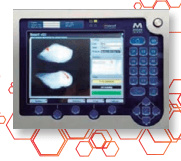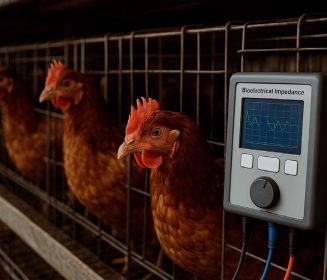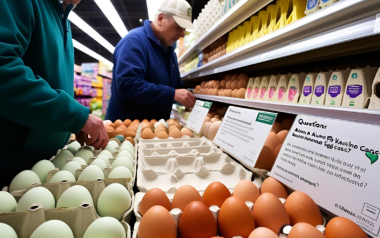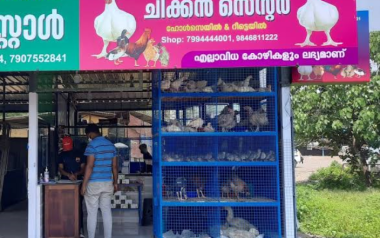27 May 2020
Precision processing of chicken, an effective possibility?
Content available at: Español (Spanish)I recently watched a sports program on European television, where they explained the current use of […]
Available in other languages:
Content available at:
Español (Spanish)
I recently watched a sports program on European television, where they explained the current use of Artificial Intelligence (AI) in soccer, so that each day their talented players do the job with the greatest assertiveness and the least physical wear. For this reason, AI experts have developed programs on how a footballer and the entire team should move and move around the field during a match. They compare this technology with reality in training sessions and in weekly games.
As a result of accidentally finding this information, I remembered a famous phrase from the Irish thinker George Bernard Shaw :
“Some people look at things as they are and wonder why?
I dream of things that don’t exist and I wonder why not? ”
Then the question arose: How can AI be applied in the last part of the broiler industry?
Objective: To know the quality of live chicken that arrives daily to the plants, evaluate the factors that may affect it during the process and having a serious impact on post-processed birds. Furthermore, to optimize the work carried out by operators of these areas and developing a more efficient process, by strategically separating the flow of birds into two large groups:
- Grade A Quality
- The rest with affectations in their physical and sanitary quality.
I have recently learned of the great successes that Precision Poultry farming has had in raising and fattening chickens. This technology is also used in the production of other farms: Pigs, cattle, laying hens, etc.
The use of AI focuses on the optimization of each of the resources involved, with the purpose of obtaining the qualities and weights of chickens that the market needs, without birds with different characteristics arriving at the processing plants, which unfortunately end up stored in cold stores, occupying very expensive spaces. This occupation represents having frozen money that cannot be pocketed, which affects the cash flow of companies.
The objective of this article is to present some areas in the processing of birds, where this technological infrastructure can be installed.
HANGING
Once the birds are latched on the hooks, pass them through a kind of scanner to determine if they have bruises, hemorrhages and / or dislocations on the wings or thighs. The upside of this evaluation is to establish the number of animals that have arrived with quality problems at the plant. This equipment should be located before the chickens enter the electric stunner. The information is taken as a starting point before the process.
Currently, this technique with X-ray Vision is used to inspect all the breasts and ensure that there are no foreign material or bones.

FINAL BLEEDING TUNNEL
It is advised to install another Special Camera in this area to verify if the birds have suffered a blow or trauma during the stunning, slaughtering and bleeding processes. If so, it must be identified and quantified. Depending on the result, it is important to find out the causes and take corrective action as soon as possible.
DEFEATHERING EXIT
At the two previous sites the chickens are feathered. Now they lack them. Therefore, it is easier to visualize by quality assurance personnel who evaluate and quantify them manually. Placing a scanner with a special meter makes it easier for these people to work as the response is given in real time. The goal is to minimize the amount of seizures that occur during bird processing.
EVISCERATION
In many countries, government inspectors have a great responsibility to certify the health status of carcasses and other organs for human consumption. Thinking about your comfort, you can locate high definition devices in order to help them do their job. This technique can allow them to increase the number of chickens / minutes, evaluated during slaughter.

- Chickens that meet all health and physical requirements continue on the line along with their giblets.
- Others may be totally forfeited.
- A third group is transferred to a reprocessing line to be cleaned, washed, and disinfected.
Once these activities have been completed, they return to the evisceration line.
BEFORE COOLING
After the government inspection post, other operations continue to finalize eviscerating the chickens, such as cutting the neck and skin, removing the crop, as well as interior and exterior washing, etc., it is possible that carcasses with physical quality problems are obtained. Consequently, it is suggested that another Sensor be put into service to be sure that only the GRADE A certified chickens are selected.
COOLING
There are two types: By air or with water. The temperature conditions are completely different when they leave this area: Now they are cold. For this reason, it is considered that the revision with this technology is very timely, since one of the characteristics at this stage is the contraction of the tissues in general, highlighting any type of hematoma and / or hemorrhage that was not previously detected. At this point, product flows are generally divided into two groups:
- Whole chickens
- Chickens for de-skinning and deboning
As a conclusion, I express that using this digital technology during the processing of birds would complement Precision Poultry, that is operating in various countries in Europe and on other continents. Doing so will contribute to maintaining the operational coherence that must govern this business, and responsibly continuing to supply the healthiest, most nutritious and economic animal protein in the world.




































